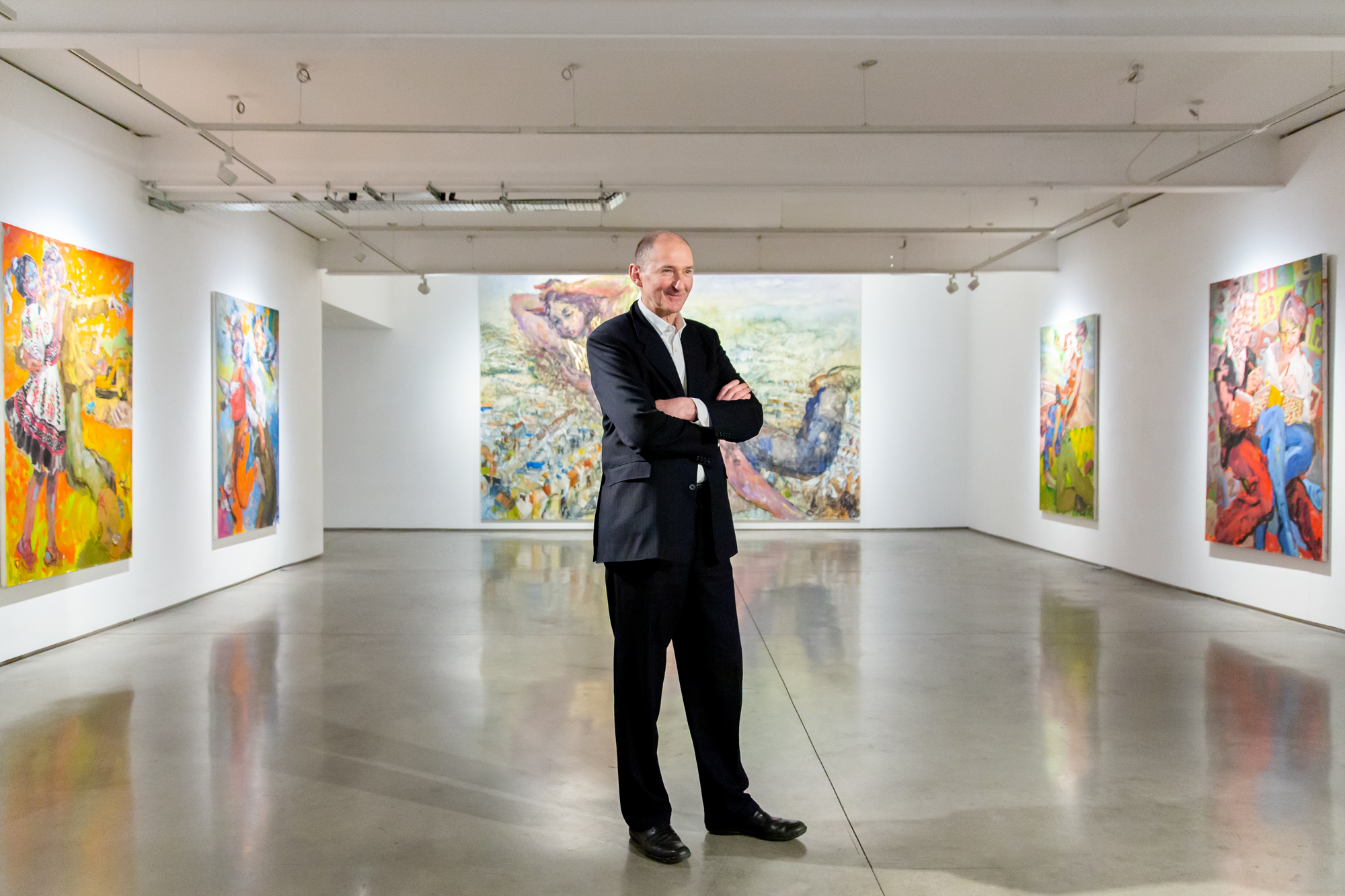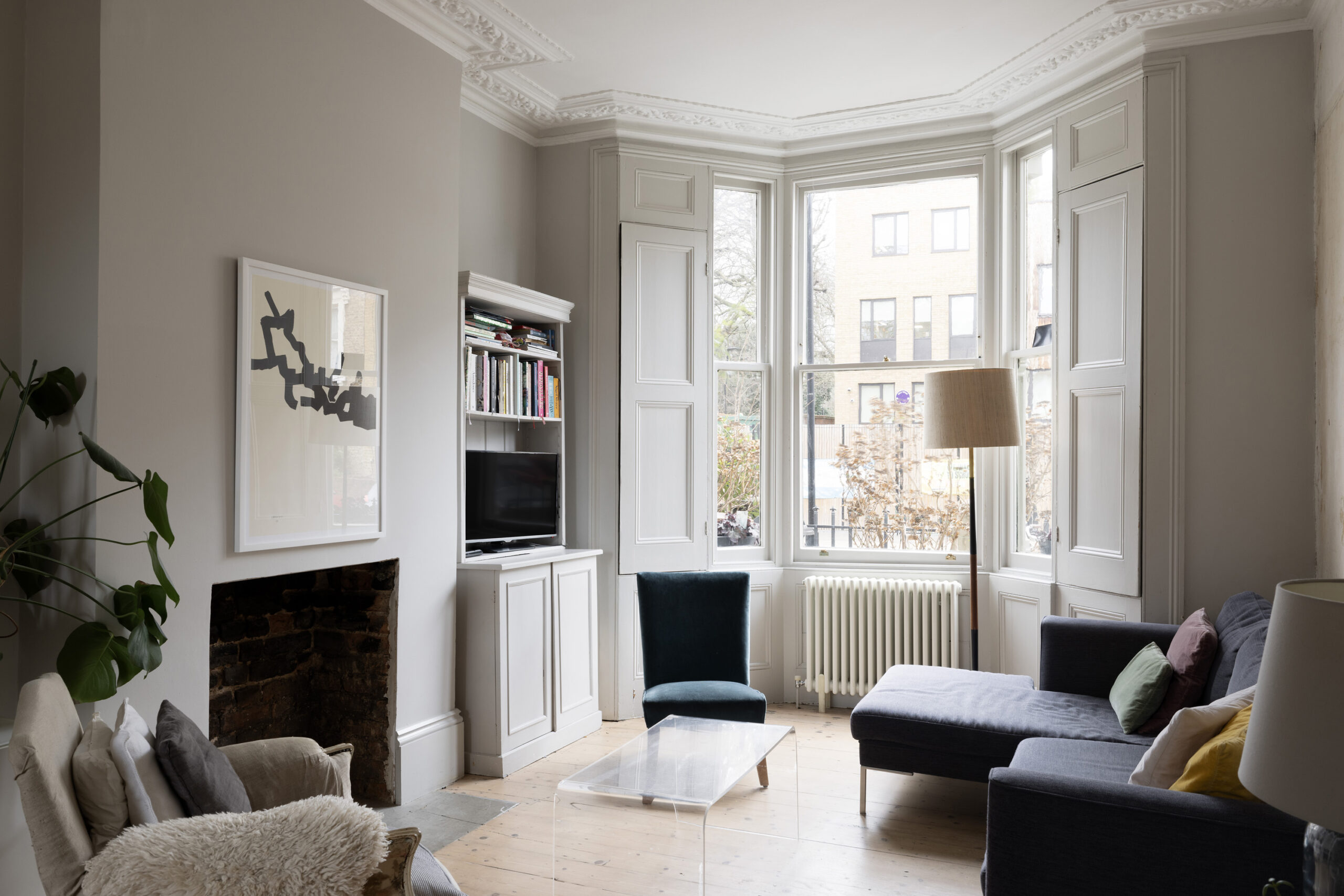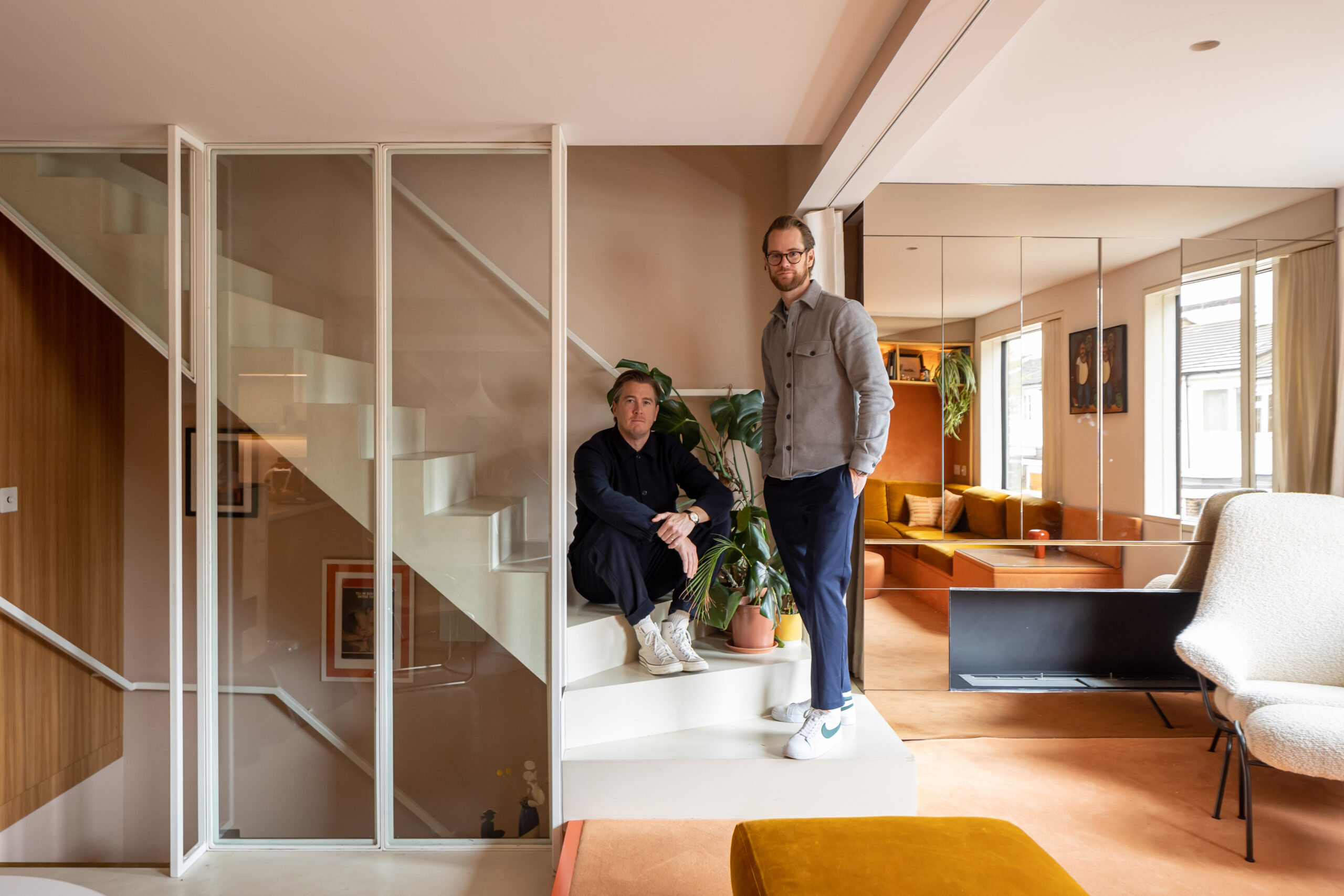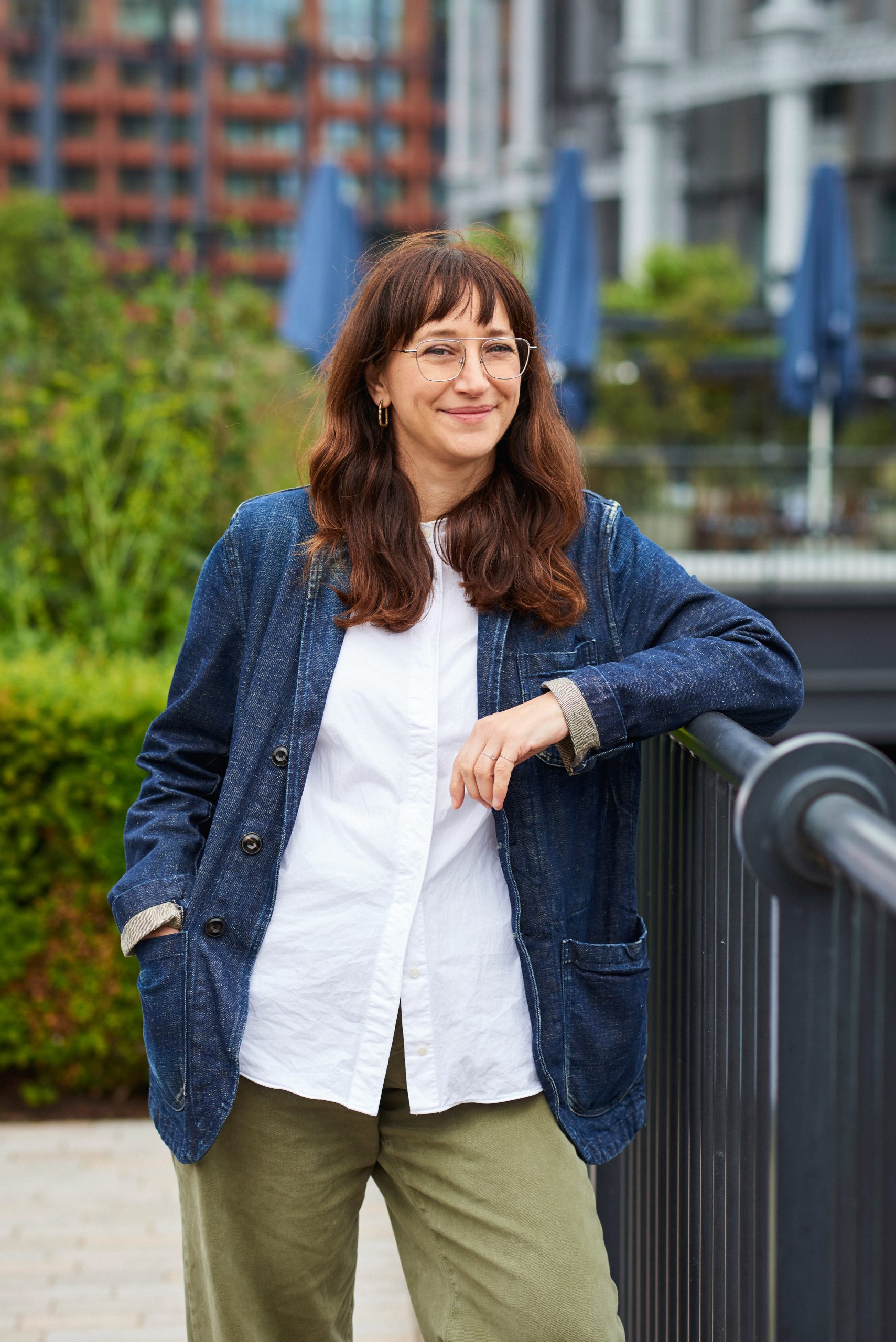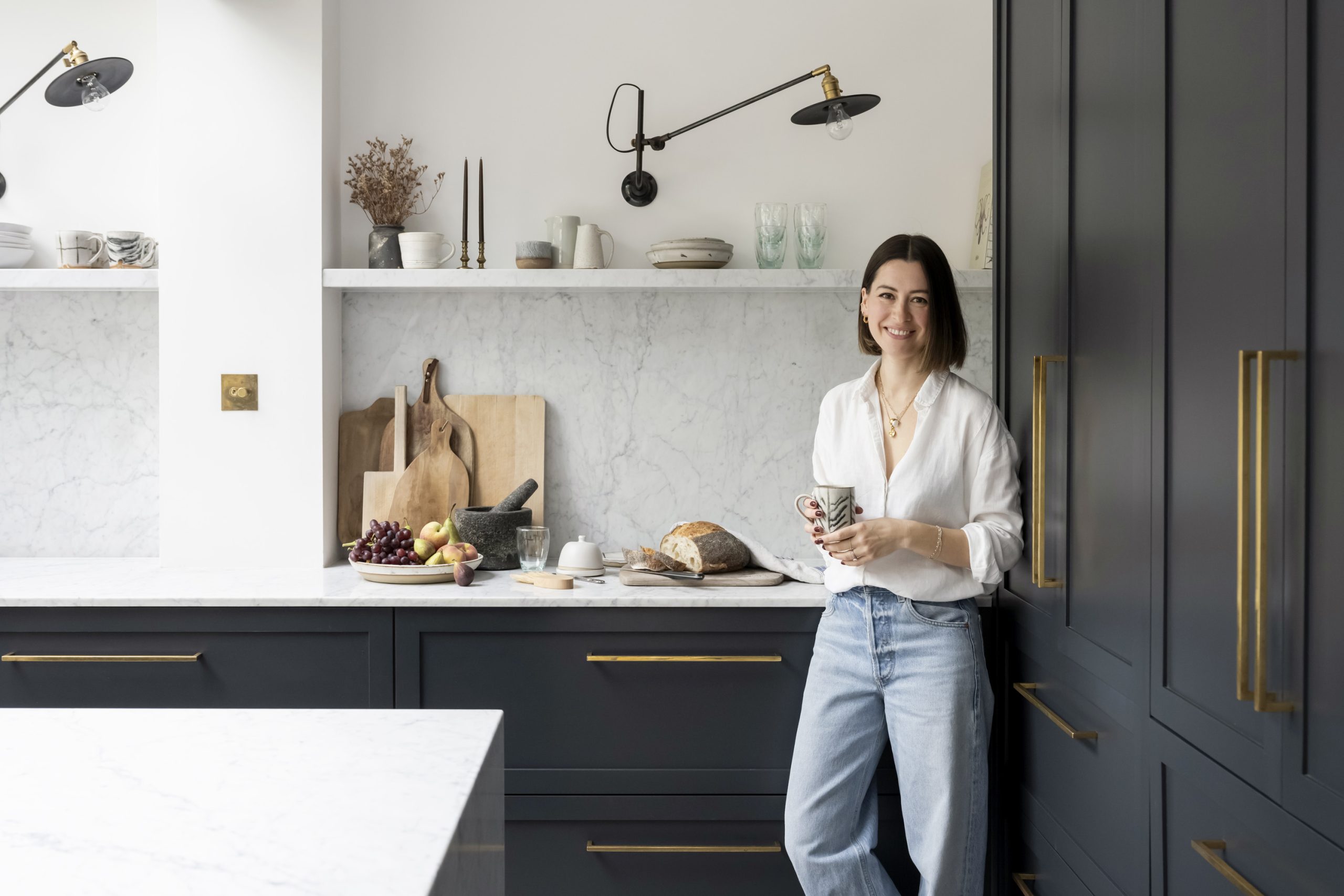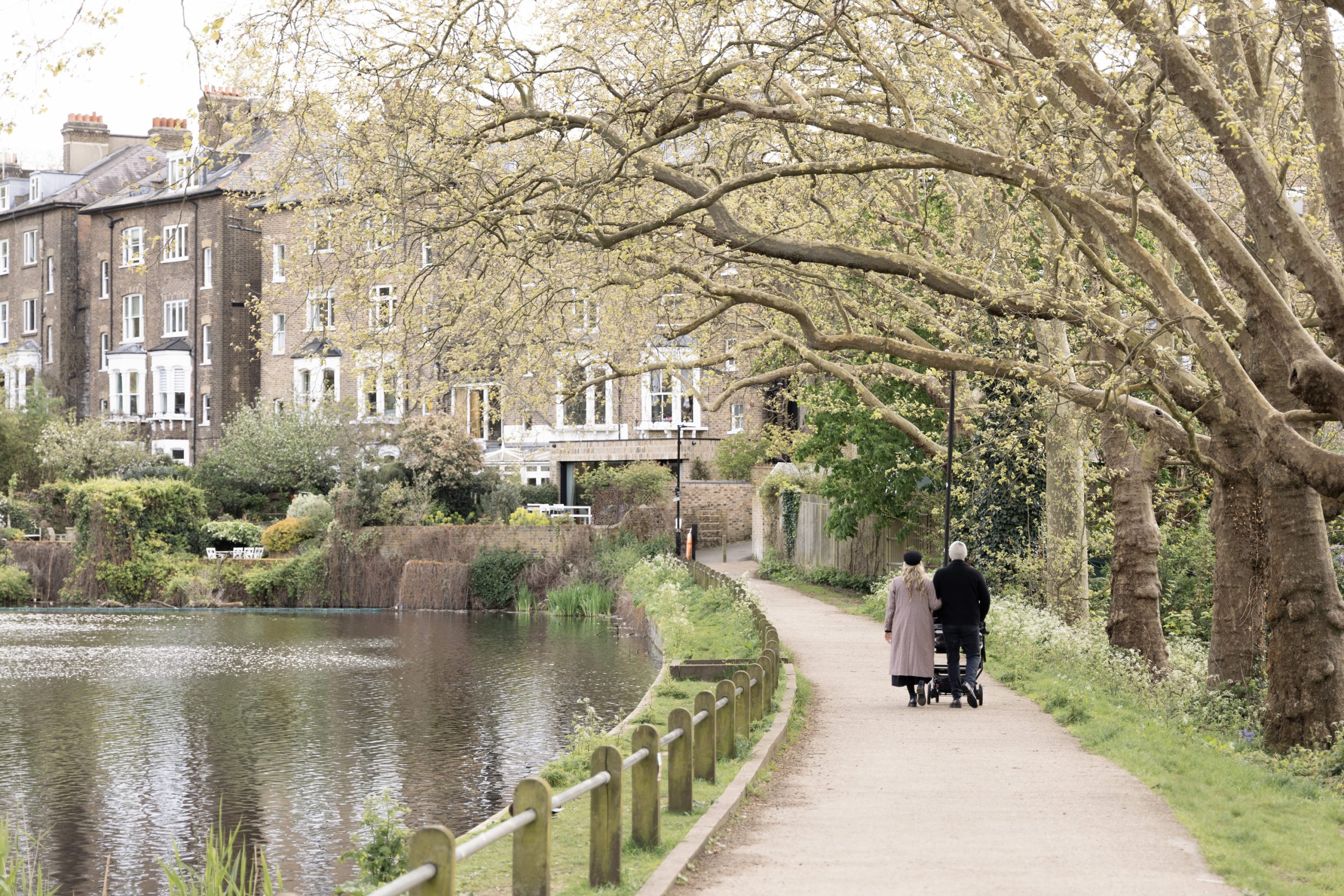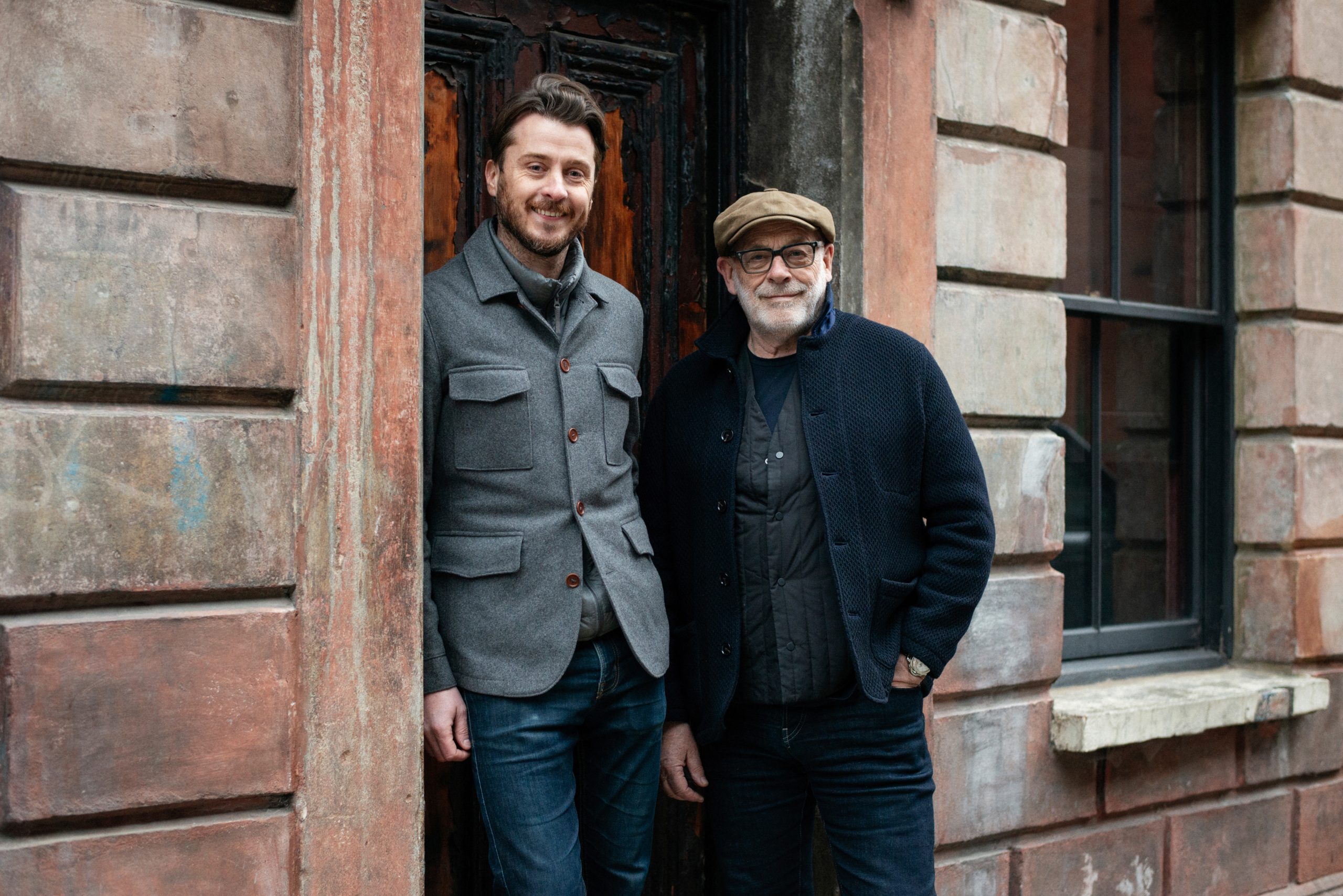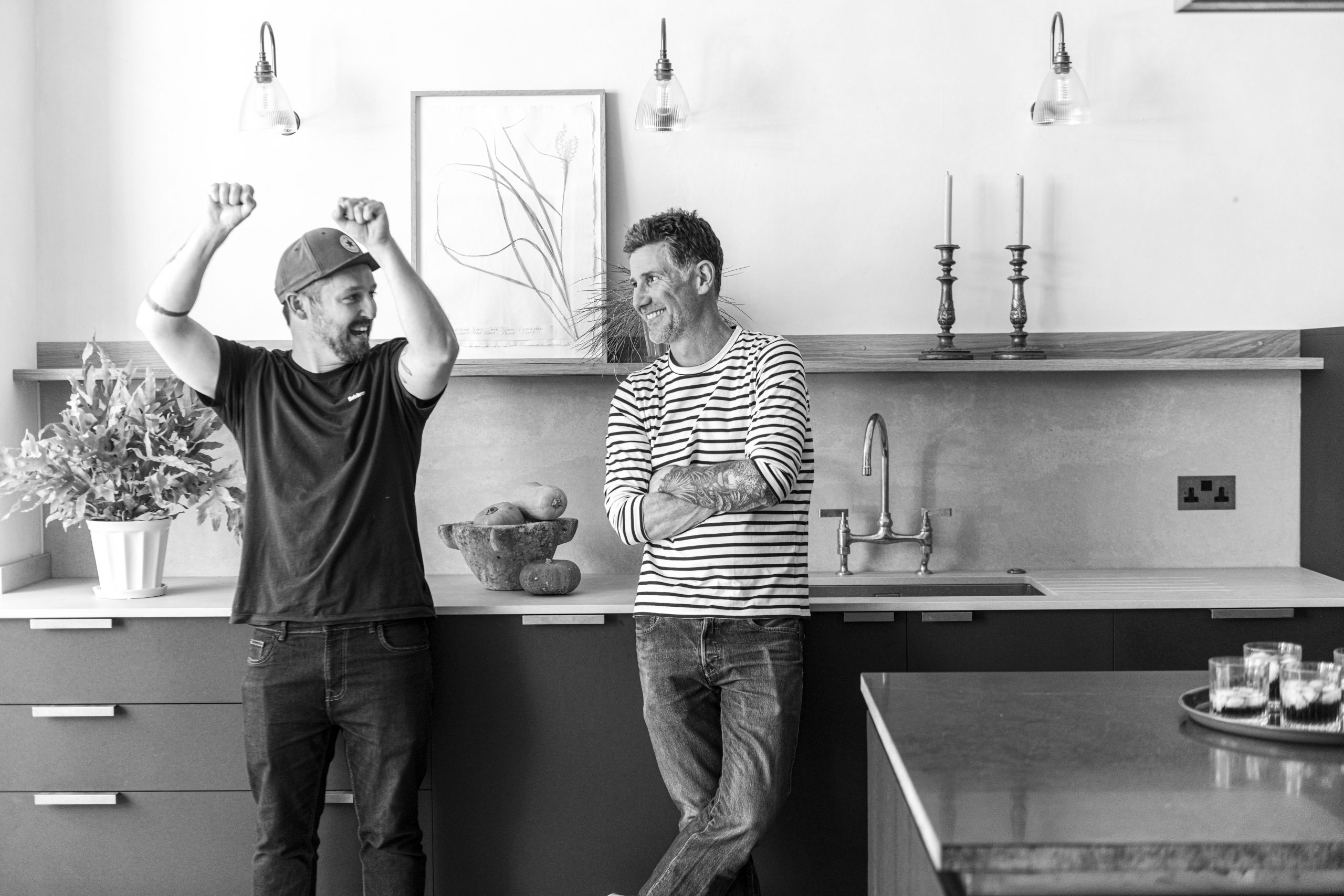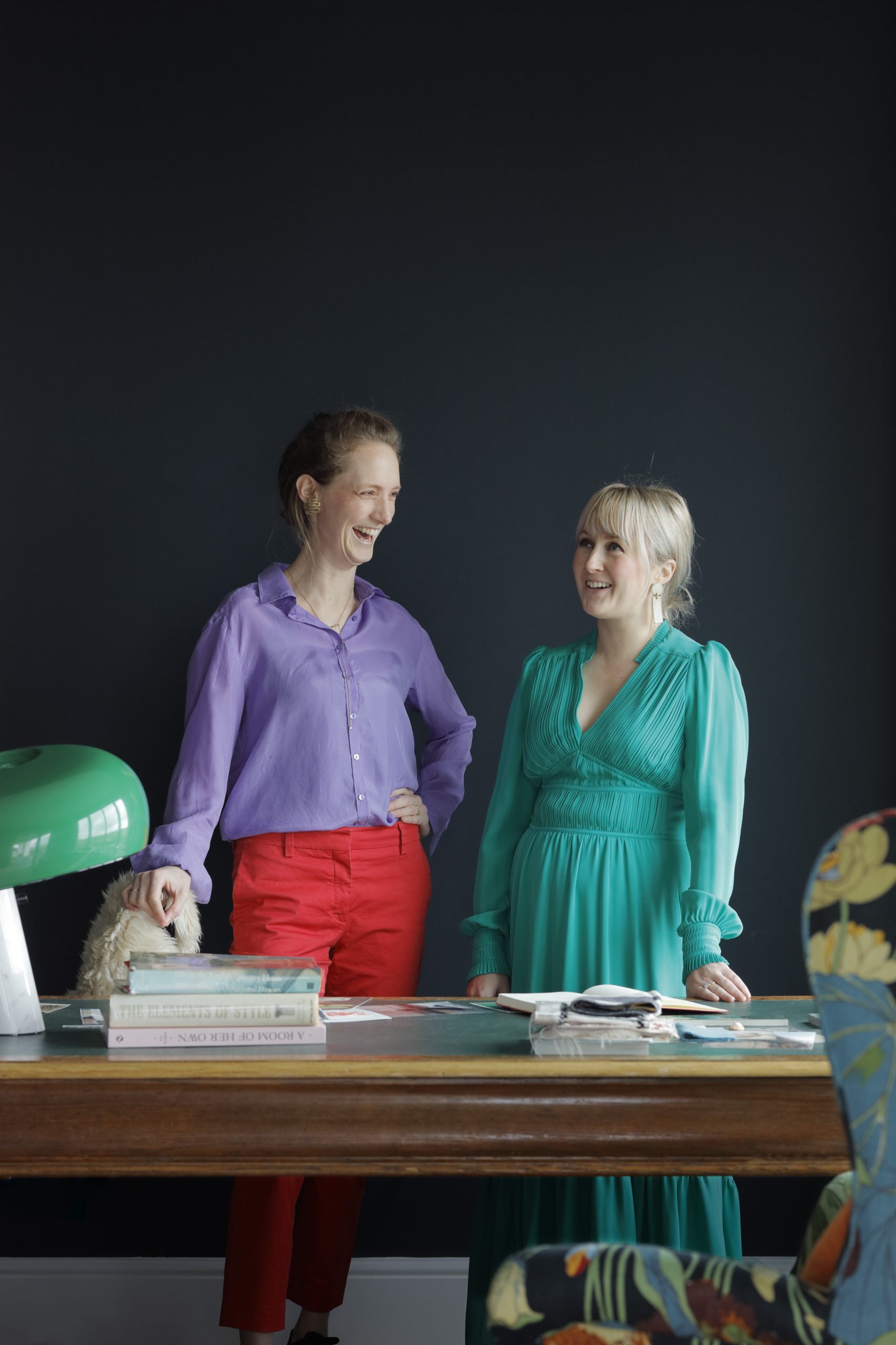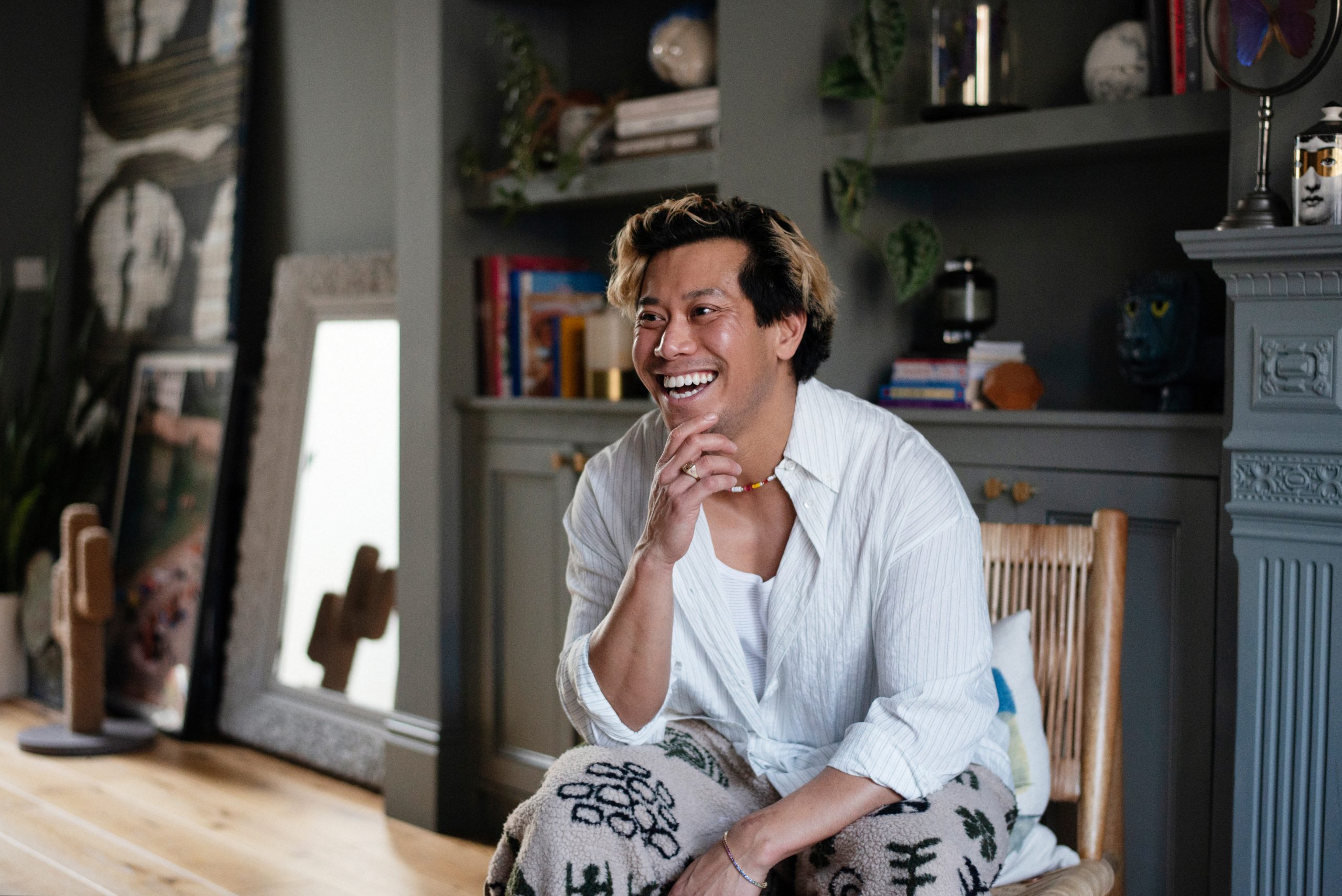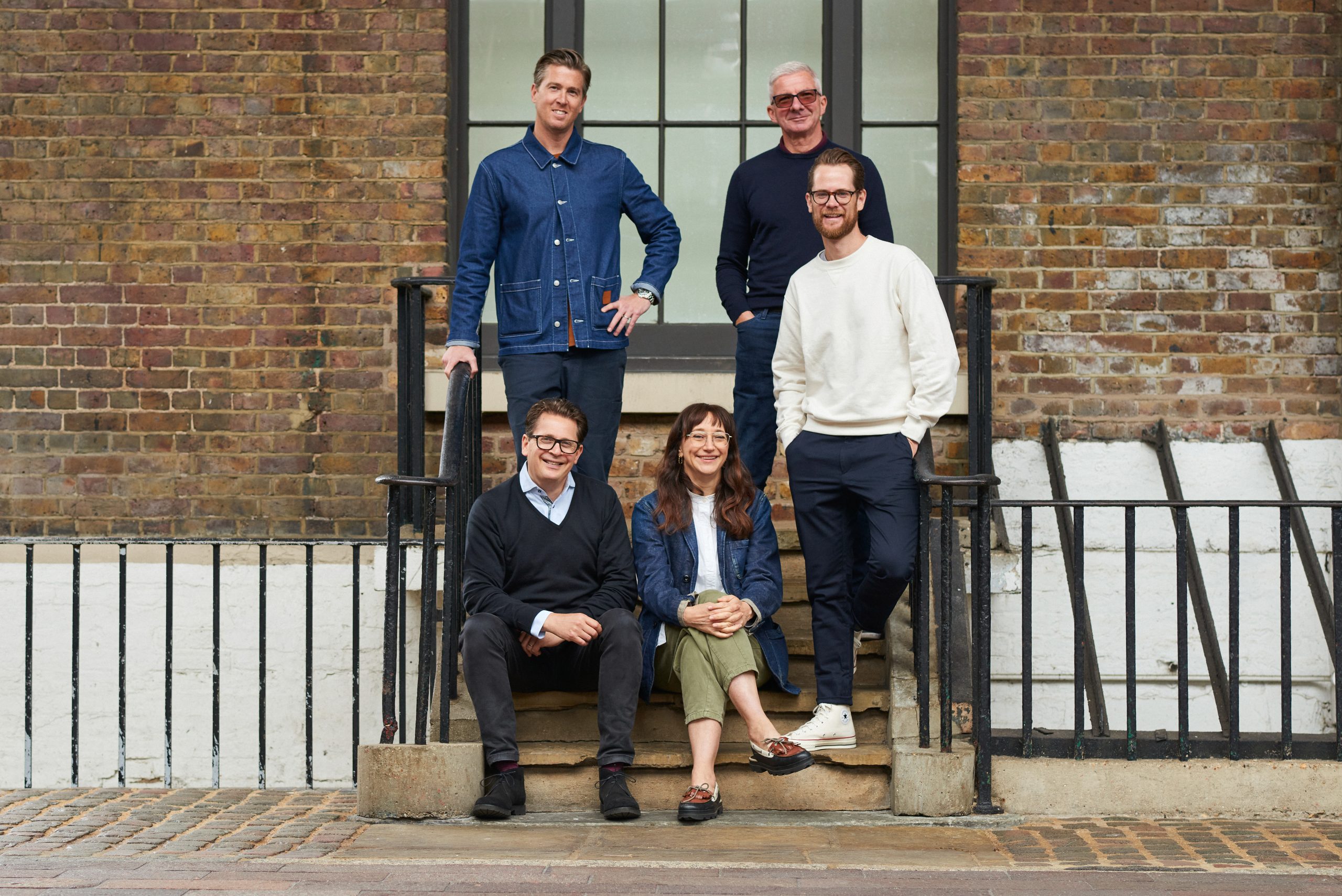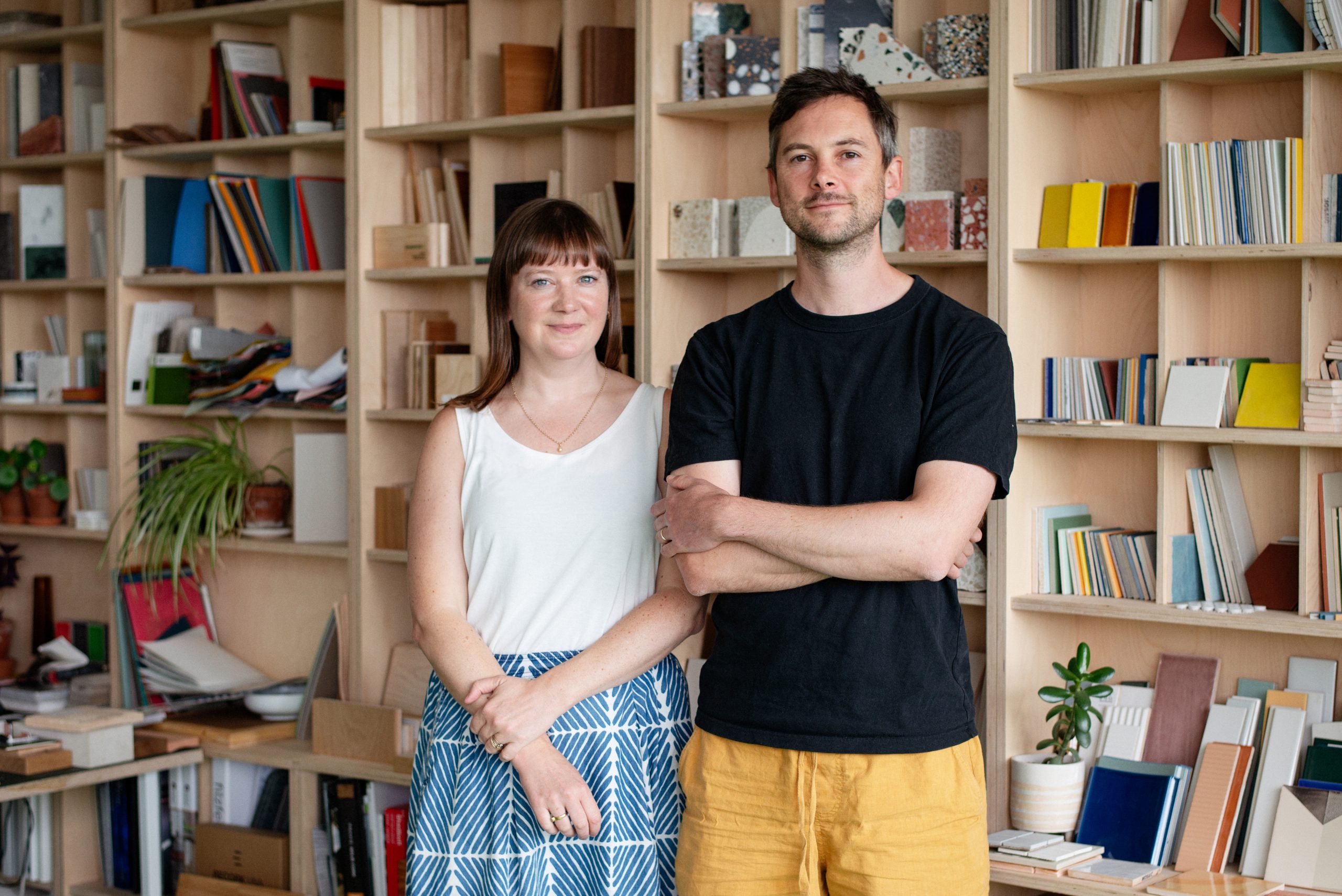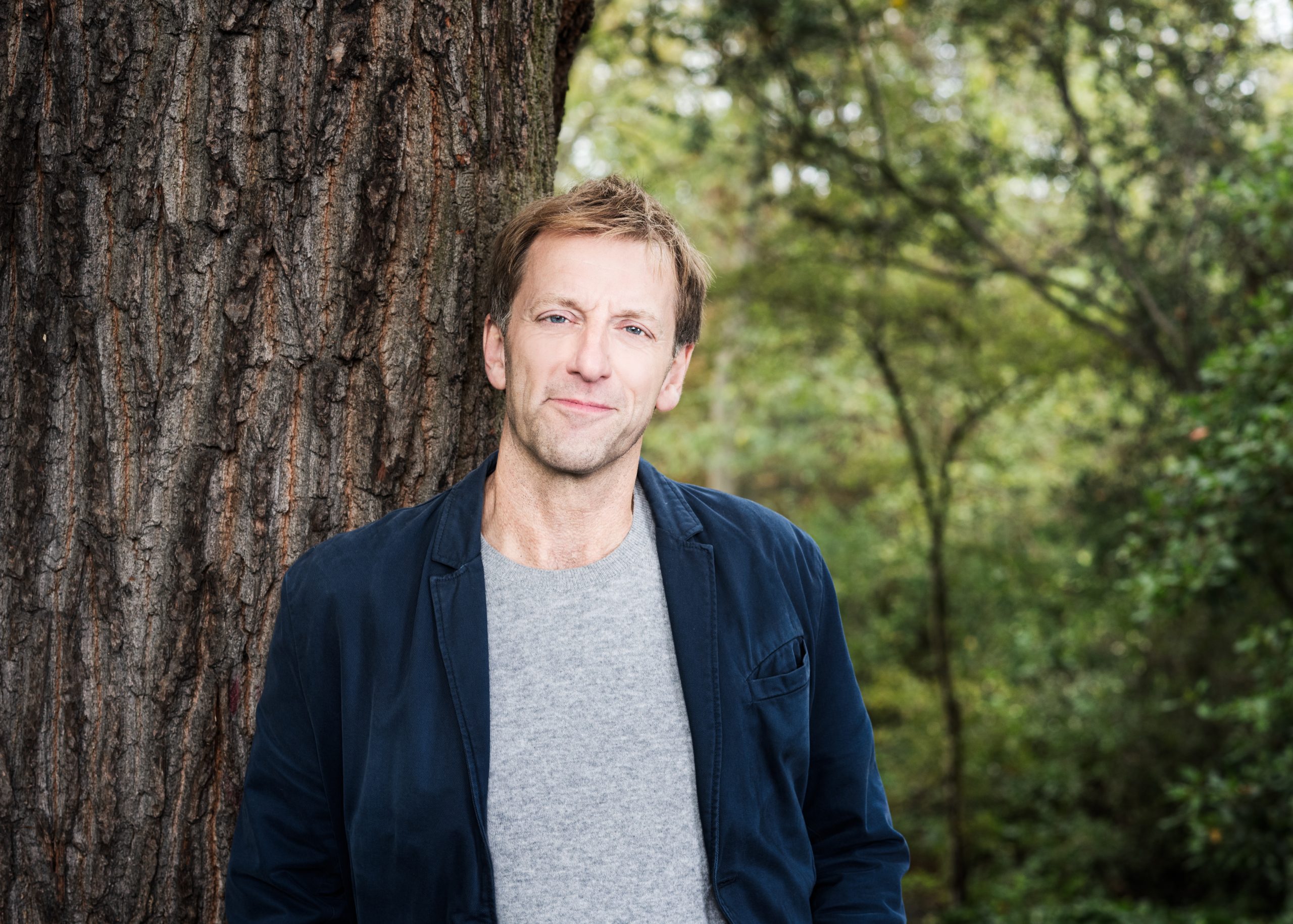Matthew Flowers talks to us about his Hackney
Flowers Gallery represents more than 50 international artists and artists’ estates. Over the past five decades the gallery has presented over 900 exhibitions across its global locations. Matthew Flowers, its Managing Director since 1989, talks to us about his Hackney, and why one of the world’s leading contemporary art galleries, with bases at various times in Mayfair, Manhattan, Santa Monica and Hong Kong, has continuously chosen to have its principal exhibition space in Hackney since 1988.
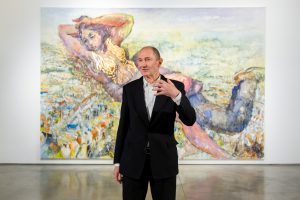
Matthew Flowers pictured in front of Kevin Sinnott (b.1947) Liebestod, 2020. Oil on canvas 340 x 511 cm 133 7/8 x 201 1/8 in (AFG 59598)
Manhattan, East London
In 1987, Matthew Flowers was living in Clapton and commuting every day to the West End art gallery set up by his mother, the renowned British gallerist, Angela Flowers, hailed as the original godmother of BritArt.
“In my twenties I started spending a lot of time in Manhattan, especially in Soho. The New York contemporary art scene was so much more developed than London. We had this relatively small gallery off Charlotte Street and every day I would drive into the West End up Richmond Road in the middle of Hackney, past all the warehouse spaces.
One day, I saw a ‘To Let’ sign up outside one of the warehouses and had this vision of transforming it into the sort of art spaces I had seen in New York. It was a furrier’s warehouse, 4,500 square feet with very high ceilings. Mum and I said to each other, “We’re already paying £30 per foot in the West End, and this space is £2, feels like downtown Manhattan and is only three and a half miles from the centre of London. Let’s do it.”
What Hackney offered was the chance for us to be the studio in the East End where the collector is taken to. If an artist is being visited in their studio, they lose a day’s work getting it ready for the collector who’s coming in. Initially, we saw Richmond Road as a glorified storage and viewing facility but it quickly became much more than that and we loved being a gallery with a West End and East End space.”
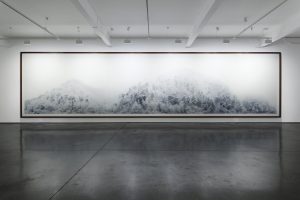
Installation view Sansu by Boomoon, Flowers Gallery
There were other compelling factors about Hackney. Momart were there already and at the time they were the biggest shipping and storage facility for arts in the UK. They looked after a lot of the Arts Council collection and Charles Saatchi’s too. Matthew knew that collectors going there to view art would come upstairs and see the Flowers Gallery.
“And Hackney had the highest concentration of artists living and working in one place in the whole of Europe, probably the whole world. It was all tying in. I thought that we could benefit from the synergy that was there.”
The Hackney Art Gallery
Flowers East opened with a large survey show of contemporary portraits, including big names like Frank Auerbach, Lucian Freud, Leon Kossof, Eduardo Paolozzi, Maggi Hambling and Elisabeth Frink.
“This was September 1988 and we were thinking, Would anyone come to Hackney? The transport links at that time were poor, but the show was covered by all the media and the gallery immediately took off. It was just extraordinary, the impact it had. Soon, we made Hackney our main focus.”
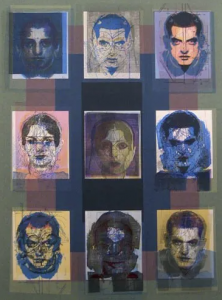
Eduardo Paolozzi Bunuel (nine heads), 1997. Screenprint 73 x 56 cm 28 3/4 x 22 in Edition of 40 FG 04453
Hackney Pioneers
The move to Hackney and its new West End / East End identity marked a radical shift for the gallery. Flowers loved the space offered by the borough and, in addition to their central Hackney location, took a lease on a leather factory in London Fields that was to further cement the gallery’s international renown.
“It was 18,000 square feet, a ridiculous amount of space, and the two vast exhibition spaces allowed us to put on large, internationally acclaimed shows including British Abstract Art – Part 1, Painting, with works by many of the leading living abstract painters including Patrick Heron, Bridget Riley, Tess Jaray, Sean Scully, Michael Kidner, Robyn Denny and John Hoyland. This was followed by a Part 2, Sculpture that included Anish Kapoor, Alison Wilding and Richard Deacon.
“There was no other borough in London that had a gallery pioneering on this scale. What Charles Saatchi was doing in St John’s Wood and the Lisson Gallery were doing in Marylebone was remarkable and important, but we were doing something in spaces of a different scale and in an area that was not established. We were even ahead of the American mega galleries like Gagosian. And Hackney was the inspiration for all this.
“When galleries like White Cube and Victoria Miro moved east, Tim Marlow who used to be director of exhibitions at White Cube told me, ‘You were the trailblazer. You were the gallery we followed.’”
Musical Roots
Matthew’s relationship with Hackney started with his first career as a musician. He was a keyboardist in various bands and appeared on The Old Grey Whistle Test and Top of the Pops.
“I knew all the rehearsal spaces in the borough and venues like The Rochester Castle in Stoke Newington and Chat’s Palace in Clapton. I also had some friends who’d done quite well in the city and moved there, and I played football on Hackney marshes. It was the natural place to buy a first home.
“What Hackney was to me then, it still is to me now, despite the changes – salt of the earth people, interesting creators and artists, and multicultural communities. Great markets, fabulous green spaces. Hackney has always just felt really good on many different levels.
“Nowadays, I love stepping out of the gallery and walking up to Haggerston and along the canal, or returning to the increasingly beautiful Clissold Park, where I used to live on Queen Elizabeth Walk with this great view of the reservoirs behind. They have been transformed into a nature reserve where you can walk and swim. The Turkish Ocakbasi are a big part of my life and there are maybe twenty Vietnamese restaurants within a five-minute walk of the gallery. There’s every kind of food in Hackney. When we were still on Richmond Road, I had a couple of collectors come regularly from Barnes to Hackney when they could have chosen to meet in Mayfair, and I discovered they’d come specially to visit the Chinese restaurant round the corner from the gallery.”
“We represent Carol Robertson who lives in Hackney and has a studio just around the corner from the gallery in Shoreditch. Lucy Jones had a studio in the borough and there were also artists I brought to Hackney, like Peter Howson, John Kirby and Alison Watt.”
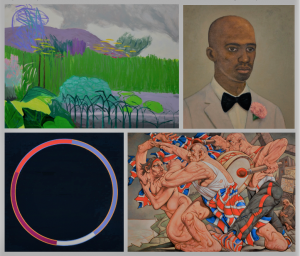
Top left, Lucy Jones, beyond the Allotment, 2013. Top right, John Kirby, Groom, 2017. Bottom left. Carl Robertson, Septmeber Phases #1, 2018. Bottom right, Peter Howson, Entzauberung, 2018.
Shoreditch Bound
By 2001, Flowers had decided that Shoreditch was where their Hackney art gallery should be. It was their turn to follow White Cube, who had established themselves in Hoxton Square four years earlier.
“We were jumping on their bandwagon, even though they had been influenced by our moves originally. The leases on both our Richmond Road and London Fields spaces were coming to an end and we wanted long term security. We bought a 12,000-foot space over three floors of a 19th century warehouse on Kingsland Road, in the heart of Shoreditch. The lease is a thousand years, which is our way of saying that we have been in Hackney for a long time and we intend to stay.”
Hackney in the twenty-first century is associated with excellence on many levels; tech start-ups, architects and designers, museums, markets, Olympiads, artists and musicians. Alongside Flowers’ globally celebrated painters and sculptors, the Shoreditch space has seen the growth of the photography programme, working with artists including Edward Burtynsky, Robert Polidori, Mona Kuhn, Nadav Kander, Julie Cockburn and Shen Wei.
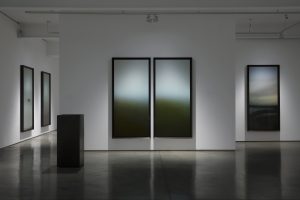
Installation view of Nadav Kander, Dark Line
“This part of South Hackney made us feel we were closer to a hub of galleries, especially down near the Tea Building. It also made a lot of sense to be closer to the city where some of our collectors are. It was before Hoxton Overground had opened, but we knew it was in the pipeline. It was a great move.
“I love Shoreditch. I think that it just offers so much. Of course, the area is incredibly hip and established now, but it still retains, I think, that magic of how a child imagines a metropolis to be. There’s a lot of great shops with individuality, great restaurants, clubs. People of all ages and types are drawn here. It has retained its compelling character.”
And although a Mayfair presence close to the auction houses and West End hotels is still vital to an international gallery like Flowers, Matthew’s heart is in Hackney and that’s why he has always maintained his office in the Hackney space, not in the West End.
“The funny thing about our original Hackney space on Richmond Road is it got turned into luxury apartments and has a restaurant on the ground floor. Just outside, they have kept a little plaque, which is a faded Flowers sign that we adopted when we moved to central Hackney – I can’t tell you how much that means to me.”
Flowers Gallery can be found at 82 Kingsland Road, London, E2 8DP www.flowersgallery.com

